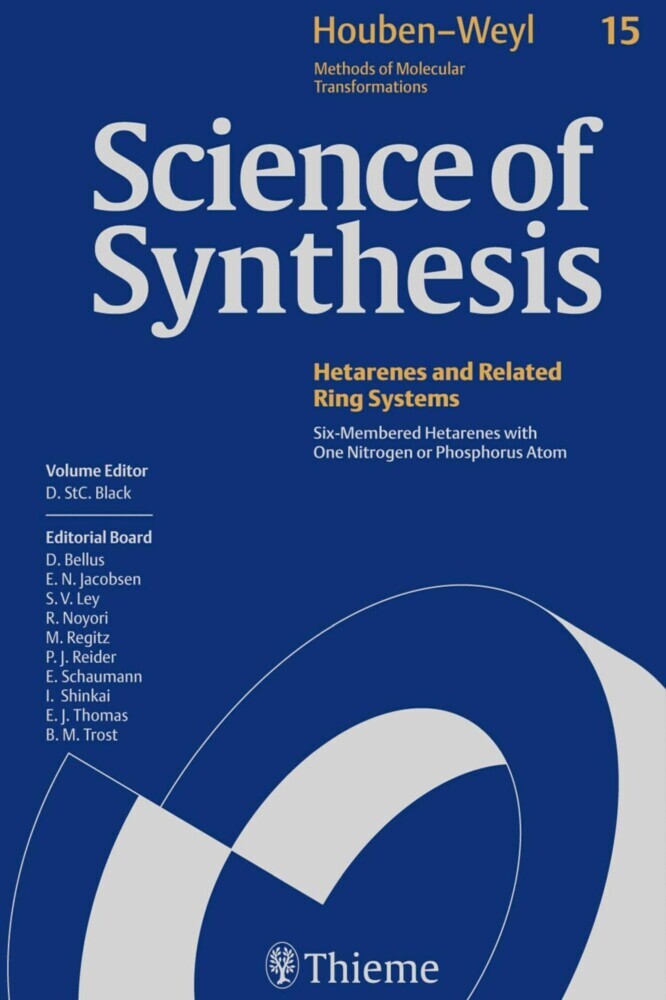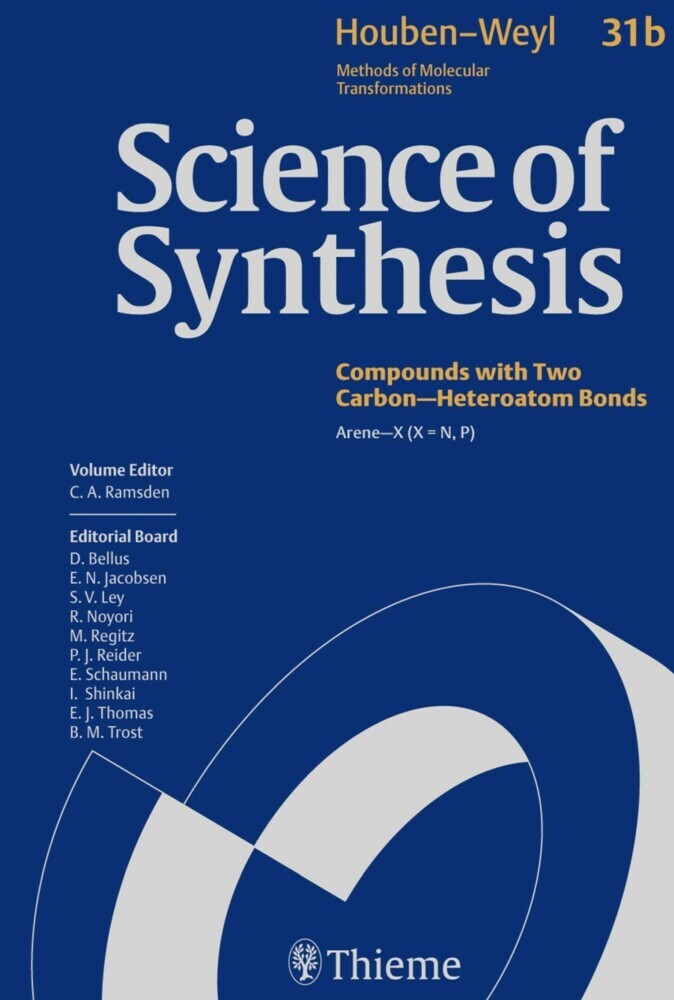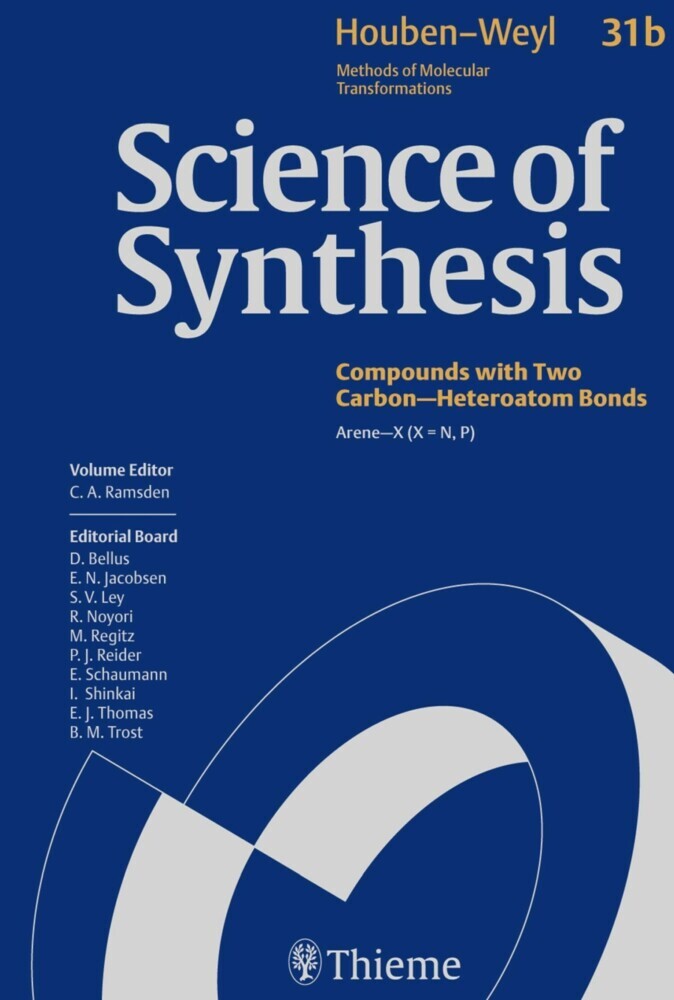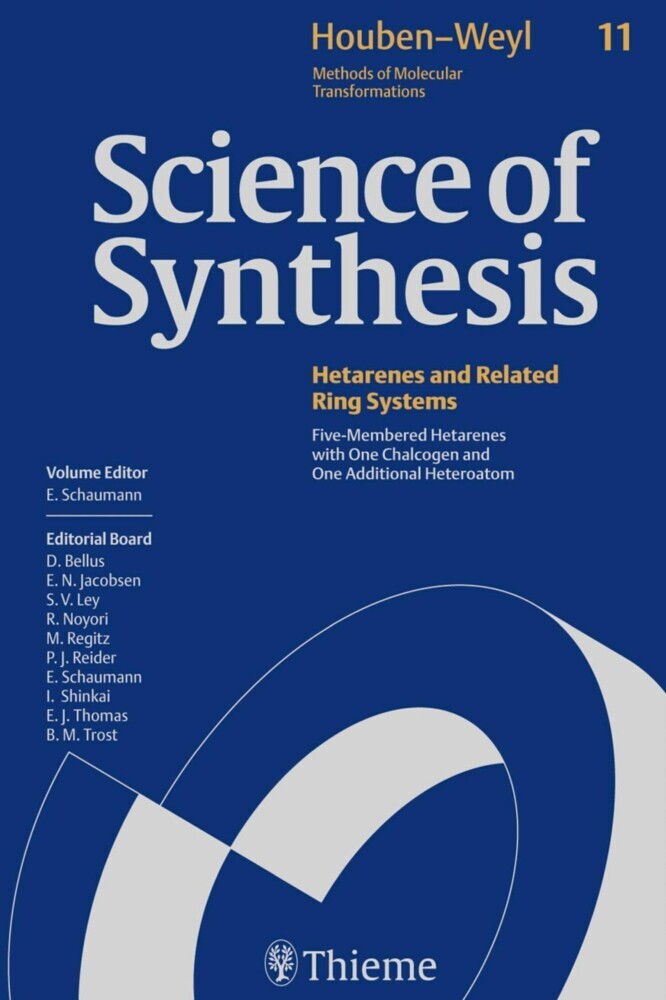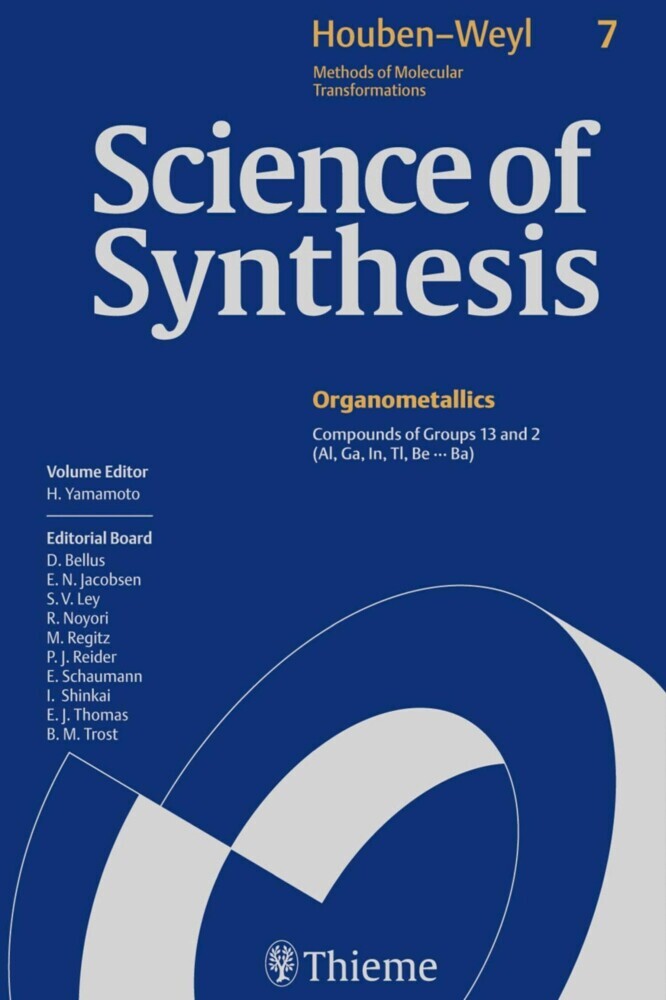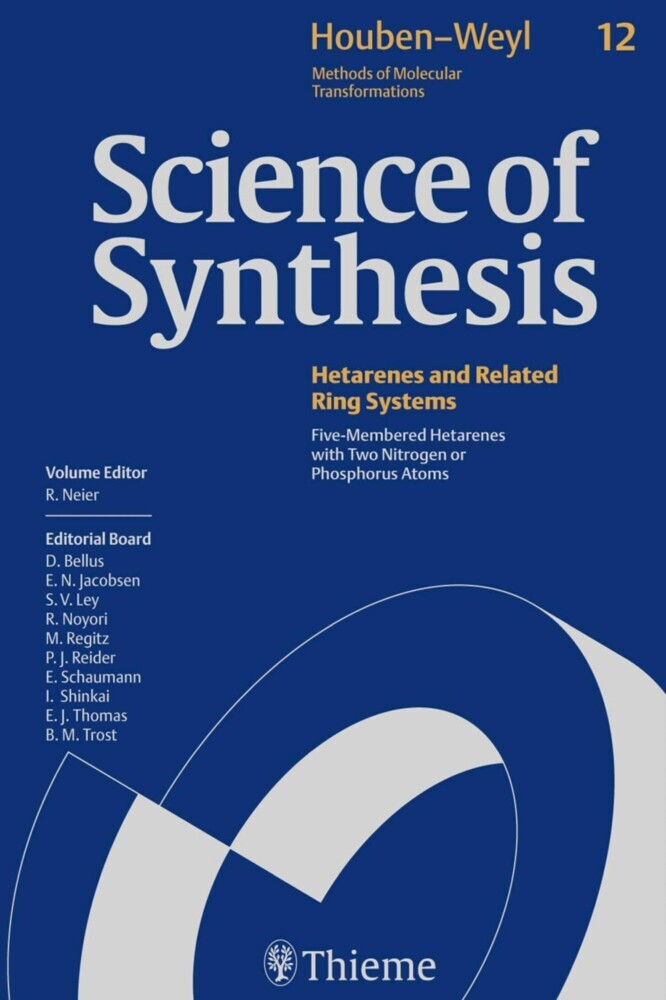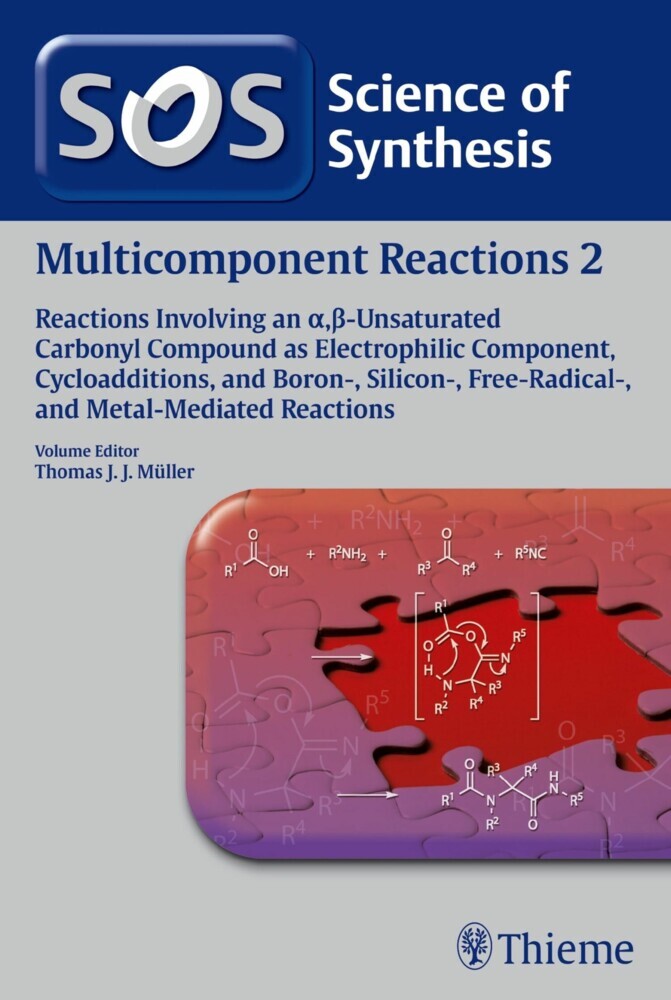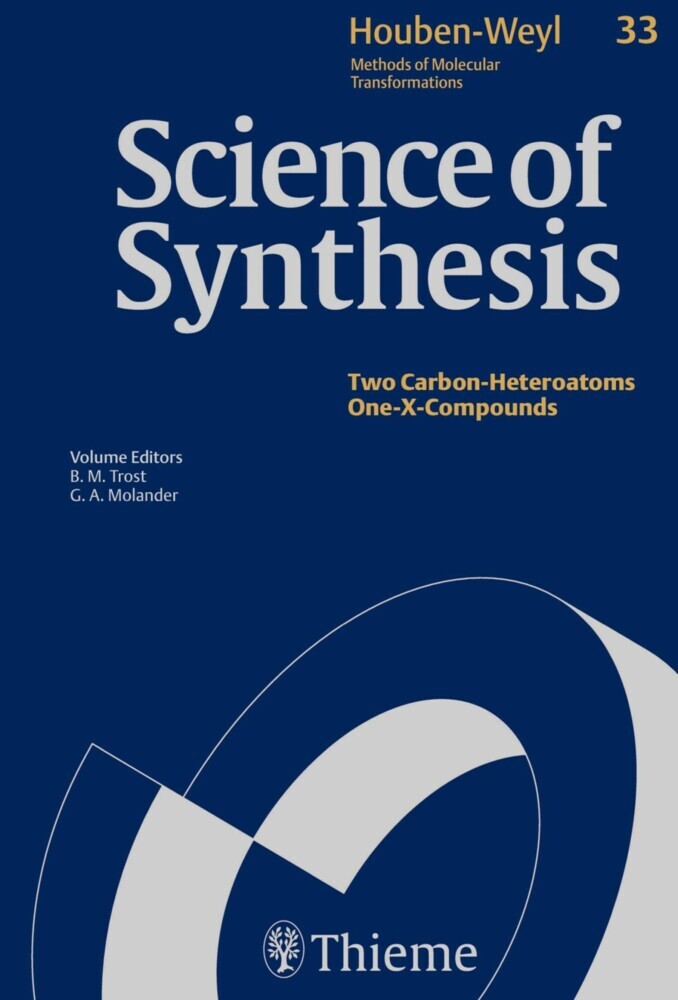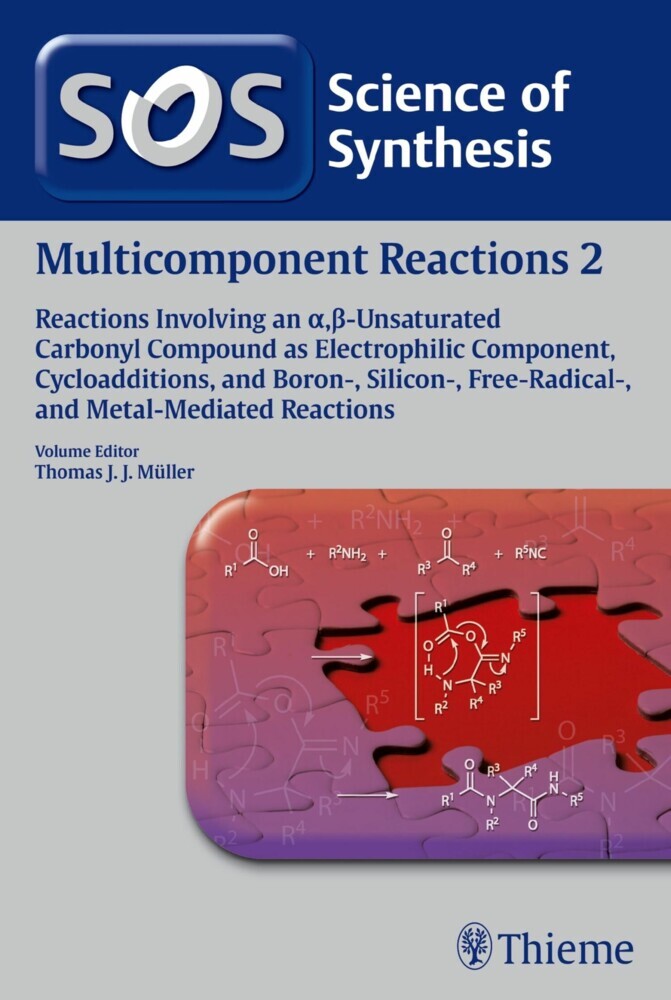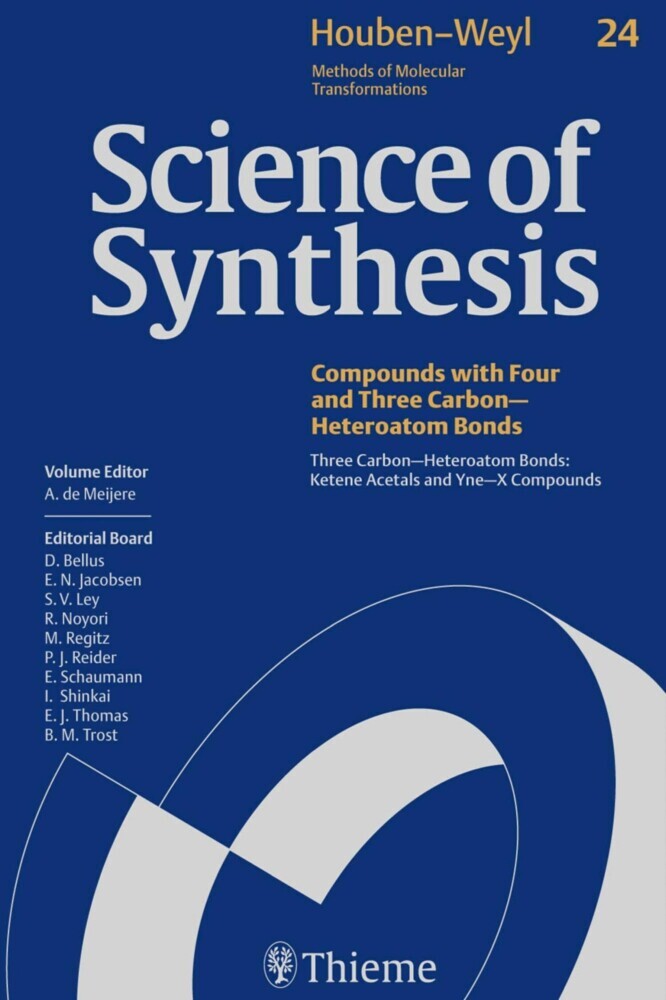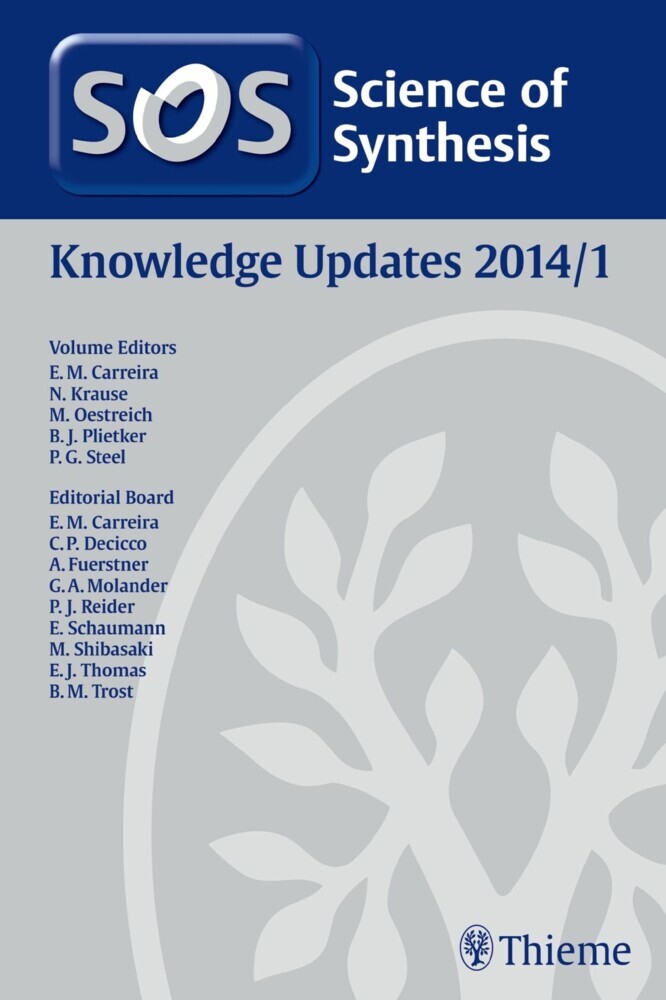Science of Synthesis: Houben-Weyl Methods of Molecular Transformations Vol. 15
Science of Synthesis: Houben-Weyl Methods of Molecular Transformations Vol. 15
Turning Information into Knowledge
Science of Synthesis: Houben-Weyl Methods of Molecular Transformations is the entirely new edition of the acclaimed reference series Houben-Weyl, the standard synthetic chemistry resource since 1909. This new edition is published in English and will comprise 48 volumes published between the years 2000 and 2008. Science of Synthesis is a quality reference work developed by a highly esteemed editorial board to provide a comprehensive and critical selection of reliable organic and organometallic synthetic methods. This unique resource is designed to be the first point of reference when searching for a synthesis strategy.
Features:
- Contains the expertise of presently 450 leading chemists worldwide.
- Critically evaluates the preparative applicability and significance of the synthetic methods.
- Discusses relevant background information and provides detailed experimental procedures
For full information on the Science of Synthesis series, visit the Science of Synthesis Homepage Series Editors: D. Bellus, S. V. Ley, R. Noyori, M. Regitz, E. Schaumann, I. Shinkai, E. J. Thomas, B. M. Trost, P. J. Reider
St Clair Black
1;Science of Synthesis - Volume 15: Six-Membered Hetarenes with One Nitrogen or Phosphorus Atom;1 1.1;Title page;3 1.2;Imprint;5 1.3;Preface;6 1.4;Volume Editor's Preface;8 1.5;Overview;10 1.6;Table of Contents;12 1.7;Introduction;66 1.8;15.1 Product Class 1: Pyridines;76 1.8.1;15.1.1 Product Subclass 1: Pyridines;76 1.8.1.1;15.1.1.1 Synthesis by Ring-Closure Reactions;78 1.8.1.1.1;15.1.1.1.1 By Formation of Two N--C and Two C--C Bonds;78 1.8.1.1.1.1;15.1.1.1.1.1 Fragments C--C, C--C, N, and C;78 1.8.1.1.1.1.1;15.1.1.1.1.1.1 Method 1: From 1,3-Diketones or ß-Oxo Esters, Aldehydes, and Ammonia, with Subsequent Oxidation (Hantzsch Pyridine Synthesis);78 1.8.1.1.1.1.1.1;15.1.1.1.1.1.1.1 Variation 1: An Abnormal Ring Closure;79 1.8.1.1.1.1.1.2;15.1.1.1.1.1.1.2 Variation 2: From ß-Oxo Cyanides, Aldehydes, and Ammonium Salts;80 1.8.1.1.1.1.1.3;15.1.1.1.1.1.1.3 Variation 3: Alkyl- and Arylpyridines from Aldehydes and Ammonium Salts (Tschitschibabin Synthesis);80 1.8.1.1.1.1.1.4;15.1.1.1.1.1.1.4 Variation 4: From Ketones, Iminium Compounds, and Ammonium Salts;81 1.8.1.1.2;15.1.1.1.2 By Formation of One N--C Bond and Three C--C Bonds;81 1.8.1.1.2.1;15.1.1.1.2.1 Fragments N--C, C--C, C, and C;81 1.8.1.1.2.1.1;15.1.1.1.2.1.1 Method 1: From Aldehydes, Nitriles, and Methylphosphonates;82 1.8.1.1.3;15.1.1.1.3 By Formation of Two N--C Bonds and One C--C Bond;83 1.8.1.1.3.1;15.1.1.1.3.1 Fragments C--C--C, C--C, and N;83 1.8.1.1.3.1.1;15.1.1.1.3.1.1 Method 1: From Enamines, a,ß-Unsaturated Carbonyl Compounds, and Hydroxylamine or Ammonium Salts;83 1.8.1.1.3.1.1.1;15.1.1.1.3.1.1.1 Variation 1: From Enamines, a,ß-Unsaturated Aldehydes, and Hydroxylamine;83 1.8.1.1.3.1.1.2;15.1.1.1.3.1.1.2 Variation 2: From Acyl Enamines, Ketones, and Ammonium Salts;83 1.8.1.1.3.1.1.3;15.1.1.1.3.1.1.3 Variation 3: From Ketones, a,ß-Unsaturated Aldehydes or Ketones, and Ammonium Salts ;84 1.8.1.1.3.1.2;15.1.1.1.3.1.2 Method 2: From Acylketene Dithioacetals, Ketones, and Ammonium Salts;86 1.8.1.1.3.1.3;15.1.1.1.3.1.3 Method 3: From Sulfonium Salts or Sulfur Ylides, a,ß-Unsaturated Carbonyl Compounds, and Ammonium Salts ;87 1.8.1.1.3.1.4;15.1.1.1.3.1.4 Method 4: From 1-(2-Oxoalkyl)pyridinium (or Quinolinium/Isoquinolinium) Compounds, a,ß-Unsaturated Carbonyl Compounds, and Ammonium Salts ;88 1.8.1.1.3.1.4.1;15.1.1.1.3.1.4.1 Variation 1: Cyclization of Ketones with Mannich Salts in the Presence of Ammonium Salts;89 1.8.1.1.3.1.5;15.1.1.1.3.1.5 Method 5: From Propynols, Enamines, and Ammonium Salts by a Four-Component, One-Pot Procedure;90 1.8.1.1.3.1.5.1;15.1.1.1.3.1.5.1 Variation 1: From Propynols, Ketones, and Ammonium Salts;91 1.8.1.1.4;15.1.1.1.4 By Formation of One N--C Bond and Two C--C Bonds;91 1.8.1.1.4.1;15.1.1.1.4.1 Fragments N--C, C--C, and C--C;91 1.8.1.1.4.1.1;15.1.1.1.4.1.1 Method 1: From Nitriles and Alkynes;91 1.8.1.1.4.1.1.1;15.1.1.1.4.1.1.1 Variation 1: From Nitriles and Alkynes by Catalyzed [2+2+2] Cycloaddition;92 1.8.1.1.4.1.2;15.1.1.1.4.1.2 Method 2: From Hydrazones and Alkynes;94 1.8.1.1.4.1.3;15.1.1.1.4.1.3 Method 3: From Imines and Aldehydes;94 1.8.1.1.4.1.4;15.1.1.1.4.1.4 Method 4: From 1-Substituted Phthalazines and Ynamines;95 1.8.1.1.4.2;15.1.1.1.4.2 Fragments N--C--C, C--C, and C;96 1.8.1.1.4.2.1;15.1.1.1.4.2.1 Method 1: From Malononitrile, Aldehydes, and Nucleophiles;96 1.8.1.1.4.2.1.1;15.1.1.1.4.2.1.1 Variation 1: From Malononitrile, Aldehydes, Ketones, and Ammonium Salts;96 1.8.1.1.4.2.1.2;15.1.1.1.4.2.1.2 Variation 2: From Malononitrile and 1,1-Diethoxy-N,N-dimethylalkanamines or Orthoformates;97 1.8.1.1.4.2.2;15.1.1.1.4.2.2 Method 2: From Lithiated Dimethylhydrazones, a,ß-Unsaturated Ketones, and a-Oxo Cyanides ;98 1.8.1.1.4.2.3;15.1.1.1.4.2.3 Method 3: From Enamines, Aldehydes, and 1,3-Dicarbonyl Compounds (Hantzsch Variation);99 1.8.1.1.4.2.4;15.1.1.1.4.2.4 Method 4: From [(Diphenylphosphoryl)imino]ethanes and Aromatic Aldehydes;100 1.8.1.1.4.2.5;15.1.1.1.4.2.5 Method 5: From [(Triphenylphos
| ISBN | 9783131718716 |
|---|---|
| Artikelnummer | 9783131718716 |
| Medientyp | E-Book - PDF |
| Copyrightjahr | 2014 |
| Verlag | Georg Thieme Verlag KG |
| Umfang | 1385 Seiten |
| Sprache | Englisch |
| Kopierschutz | Digitales Wasserzeichen |

